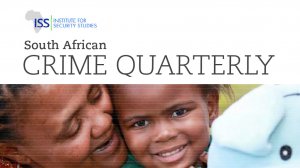- South African Crime Quarterly 510.84 MB
Violence permeates and profoundly affects almost every aspect of our lives in South Africa. It poses a significant threat to the overall health and well-being of our nation and has a negative impact on development. Major strides are being made internationally in how to best respond to provide services for survivors of violence, particularly in the field of gender-based violence. There is, however, an urgent need to complement what is being done in the field of response with primary prevention programming.
Violence can be prevented. Limited evidence on what works to prevent violence before it occurs and the capacity to develop and deliver evidence-based programmes have been major barriers to the prevention agenda – but this is changing. South Africa is leading the way in building evidence for the primary prevention of violence in low- and middle-income countries, particularly in the area of gender-based violence. Promising practices in stopping violence before it starts, based on clear theoretical frameworks, informed by local practices and rooted in risk factors that drive the violence, are available for adaptation and potential scale-up in South Africa. This special edition of SACQ is dedicated to the violence prevention efforts currently underway in the country.
Violence prevention generally falls into three categories: primary, secondary and tertiary. Simply put, primary prevention of violence includes programmes that aim to prevent violence before someone is harmed, while secondary and tertiary prevention are those programmes that intervene early, or follow after violence has occurred, aiming to prevent its recurrence. Primary prevention programmes usually engage with all people, whereas secondary and tertiary prevention programmes work with high-risk groups, victim- survivors or perpetrators.
In this edition of SACQ we focus on primary prevention programmes – those programmes aiming to address the factors that increase the risk of someone perpetrating or becoming a victim of violence. It is important to highlight that all forms of prevention (primary, secondary and tertiary) are important, and in many instances are connected.
Edited by Chandré Gould, Institute for Security Studies
The South African Crime Quarterly is made possible through funding provided by the Hanns Seidel Foundation and Ford Foundation. The ISS is also grateful for support from the following members of the ISS Partnership Forum: Governments of Australia, Canada, Denmark, Finland, Japan, Netherlands, Norway, Sweden and the USA.
EMAIL THIS ARTICLE SAVE THIS ARTICLE
To subscribe email subscriptions@creamermedia.co.za or click here
To advertise email advertising@creamermedia.co.za or click here











